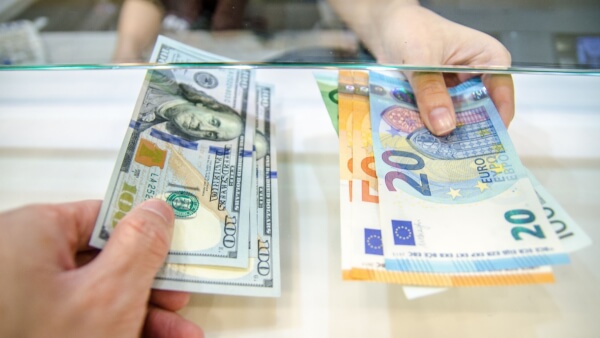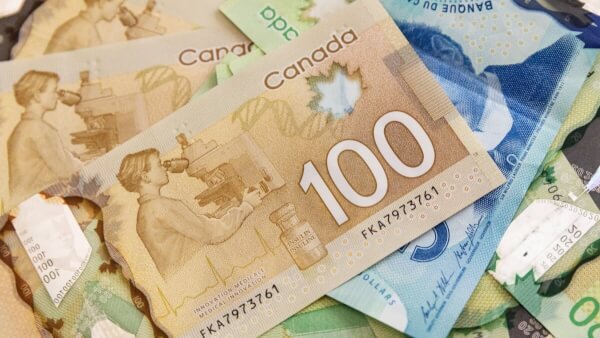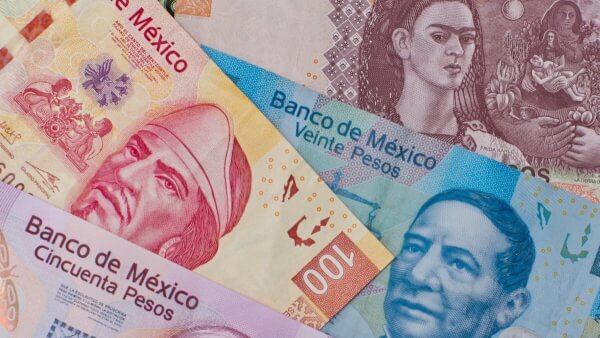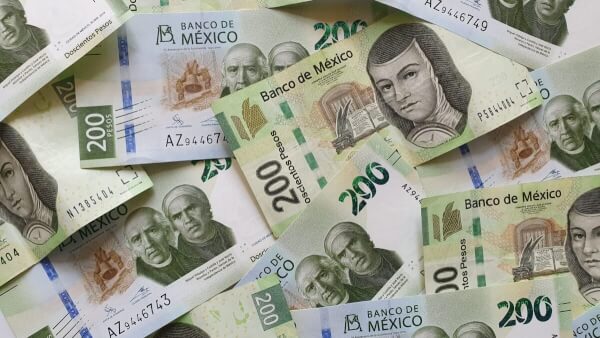What is the best place to exchange currency?
Going abroad and in need of foreign currency? In this article, we'll explore where to exchange currency - from good deals to the places you should avoid.

Using a card to buy the things you need while you travel means you don’t have to be walking around with a pocketful of unfamiliar cash. However, even though using debit or credit cards abroad is often the most convenient and safe option, there are fees and charges you need to know about before you go.
If you’re planning on using your Discover card abroad you might be wondering: Does Discover work internationally? The bad news is that the Discover network isn’t accepted everywhere. Not only do some retailers not allow payments using a Discover card, there are entire countries which have no coverage at all.
Read this guide to find out:
You can use your US Discover card in many countries abroad to make purchases or withdraw cash. However, Discover cards aren’t universally accepted, so it’s a good idea to check before you go, if your destination is covered by this network.
In general terms, you can use your Discover card wherever you see the Discover or Diners Club International symbols displayed. However, in Asia, you can also use your card in outlets which show the Union Pay or JCB sign.
If you’re going to use your Discover card abroad, you must remember that there may be additional fees to pay when you use your card overseas. You’ll also find some places which do not accept cards in the Discover network at all, so taking a second form of payment, and a small amount of local cash with you is a sensible idea.
If you want to use your Discover card out of the country you’ll need to double check acceptance in your destination.
Discover offers a map of international coverage which you can check online¹. Don’t forget though, even if there’s coverage in a specific country, you’ll find that not all retailers will take payment using a Discover card.
It’s more likely to be accepted in outlets used to dealing with tourists. Discover recommends you check acceptance at individual retailers if you want to pay Discover card internationally.
Discover card is widely accepted in North America. If the question on your mind is: can I use a Discover card in Canada? Don’t worry, you’re safe.
You’ll also find reasonable coverage in South America with a couple of exceptions. Central America has moderate acceptance rates throughout most countries, and the Caribbean tends to be even more welcoming to Discover card users.
In Europe you’ll find a pretty mixed bag. While most countries have some level of Discover card acceptance, this can vary from places where merchants are pretty familiar with Discover like Greece and Poland, to places it’s barely used, like France¹.
Few countries in Africa have high Discover card acceptance rates, but in Asia you might be luckier. Discover has a footprint in most countries in Asia, with some major economies like South Korea, Japan and India using it widely.
Whenever you make a payment with a credit or debit card, the merchant pays a small fee to the network, whether that’s Discover, or another like Visa, Mastercard or American Express.
Discover is not hugely popular in some countries because the fees they charge merchants are higher than those of some other networks. There’s no pressing need for merchants to offer Discover, so they simply opt out and accept some of the other networks instead.
Before you travel, you’ll need to know your four digit Discover Cash PIN number. Most credit and debit cards used in Europe, Canada and Australia are chip cards with an embedded microchip for security. Discover has started issuing these to members in the US, and you’ll find everyday transactions easier if your card has this already.
If you still have an older style magnetic stripe card, your transaction can be processed by swiping the strip, and taking a signature instead of a PIN.
However, chip and PIN technology² is well established in some areas, and staff might not be familiar with taking a payment using the magnetic stripe. Ask the merchant to try the card if they accept Discover — the payment terminal will then take them through step by step how to take payment.
The only place you’re likely to hit an issue with a magnetic stripe card is when using vending machines and automatic payment services for things like travel tickets or gas. These won’t work with a magnetic stripe card, so you’ll need to find a staff member to process your transaction.
Whether you choose to spend abroad using your debit or credit card, you’re going to incur some fees.
Firstly, the cost of your purchase will be changed into USD using the daily exchange rate set by Discover. Discover doesn't publish their exchange rates, but usually you’ll find that they’re slightly less favorable than the mid-market exchange rate you find on Google.
However, this only applies if you’re charged using the local currency. If you choose to pay for your transaction in USD under something called Dynamic Currency Conversion (DCC), it’ll cost you way more. We’ll cover DCC — and how to avoid it — in just a bit.
If you’re taking cash out of an ATM, there may also be charges to pay. This might mean a further percentage added onto the fees you’ve already paid, or a fixed amount per withdrawal. However, you can reduce or avoid these charges by choosing an ATM from the Discover network³. If you’re taking a cash advance using a credit card, you can expect the fees to be very high.
It doesn’t stop there, though — you still have to look over the fine print, as some individual banks or ATM providers might levy their own fees on top of your bank charges.
Discover offers an ATM locator tool³ to help you find a place near you to make a cash withdrawal. Many of the ATMs provide fee free withdrawals — although you might need to double check with the bank or card issuer to see which ATM networks they’re a part of.
Wherever you are in the world, you might also be asked if you want your purchase to be processed in USD instead of the local currency. This is known as Dynamic Currency Conversion (DCC). It sounds like it offers a service to customers, but don’t be fooled. DCC should always be avoided.
If possible, choose to pay in the local currency. Even if it might be simpler to see the costs in dollars, you can be sure that the foreign currency exchange rates applied are pretty poor — meaning you get a worse deal overall.
By using DCC you’re basically giving the local company or ATM machine permission to use its own rate to make the conversion on the spot. While your bank wants to keep you happy because you’re a valued customer, a foreign provider has no such obligation. They’ll see a quick buck, and have no problem marking up the exchange rate and pocketing the difference.
If you’re using a credit card, the process to calculate the costs applied will be similar. However, you might also incur interest charges if you don’t pay your bill at the end of the month. Check the specific details for your card type, as some cards come with rewards and cash back, which can make them a reasonable deal overall, so long as you do the math and understand the interest charges.
The exact fees for your card will be detailed online or on the back of your card statements. However as an example, here are the standard fees you’ll likely be charged to use your US Discover card while you’re away⁴ ⁵:
| Discover Credit Cards | Discover Debit Cards | |
|---|---|---|
| Standard foreign transaction fee | 0% | 0% |
| ATM Usage Foreign Cash Fee/ Cash Fee | Cash advance fee of $10 or 5%, whichever is greater. Outside of the Discover ATM network, the ATM provider might also add additional fees. | Withdrawals from the Discover ATM network fee free. Outside of the network, the ATM provider might add additional fees. |
If you’re using your Discover card to pay for your travels, it’s good to know that they’ve eliminated all foreign transaction fees on their cards. These charges are where many card providers deduct a cut for themselves — usually a percentage of the amount you spent.
Be wary, however, because it’s possible for card issuers to make their profit by rolling their cut into a poor exchange rate instead. As Discover doesn't publish transparent daily rates, it’s impossible to be sure that the rate they apply is fair. Keep an eye on the amount you’re charged using your Discover card, to check you’re not being fleeced on the exchange rate.
Being on vacation with no money is a bit of a nightmare situation. If you lose your card, or it gets stolen, you need to have a plan.
Whatever has happened, you’ll have to contact your card issuer to report the loss. They’ll cancel the card and order a new one for you.
You’ll find the form needed to report a lost card, by logging into online banking — or you can get the number to call on your statement, online or on the back of your card. It’s a good plan to make a note of the contact details, and keep it separate from your card during your travels.
You can find contact numbers and forms to report your lost or stolen Discover card here:
You also have the option of getting card protection insurance, which could give you additional help if your card is lost or stolen while you’re away. However, this is an optional service and you’ll have to pay for it. Card protection is usually available from your bank or an insurance company.
There’s no clear winner when it comes to the question of whether it’s best to use a debit or credit card abroad. A lot depends on the deal you’ve got on your preferred card. Either way, because Discover might not be accepted wherever you’re traveling to, it’s a smart idea to have another card on you, which uses a different payment system like Visa or Mastercard.
Using a debit card is better for cash withdrawals. In this case you can benefit from reduced fees, or even no fees at all if you use specific ATMs. However, if you use an ATM from outside of the network, you’ll be hit by hefty costs.
If you need to spread the cost of your trip, a credit card might suit better. Many Discover cards also give cash-back or rewards to help you travel more in future. Remember to account for additional interest costs if you don’t pay your bills immediately, though. It’s also worth knowing that credit card cash advances come with very steep fees.
Whichever card you choose to use, your purchases are monitored and you should be able to get help if you’re the victim of fraud. Discover says that you’ll not be held liable for costs associated with fraud if you should fall victim. To get the most out of this, keep all your receipts and check your card statements thoroughly when you get back from vacation.
| Read our full review on the Discover it Miles travel card |
|---|
Whether you need a card to spend abroad or just need a quick, cheap and fast way to send money abroad, Wise has you covered.
| 🎯 With Wise you can also |
|---|
|
Discover recommends you tell them if you’re traveling abroad. You can easily update Discover of your plans, by logging into online banking and entering the details there.
The reason you have to do this is to make sure the bank does not block your account when they see unusual activity. All transactions are monitored for fraud, and spending in a new location might show up as suspicious if the bank isn’t aware of your travel plans. In this case, the bank will try to call you to check everything is okay. It’s essential therefore, to make sure your bank has your correct contact details and you keep your phone on and in service while you travel.
It’s a common sense precaution to have a secondary bank card just in case there’s a problem with your usual card. Pick a Visa, Mastercard or Amex as your second card to be safe, and remember that keeping a small amount of local money is also smart. Cash is still king in many places.
One problem many travelers run into is accidentally overspending after losing track of the costs in another currency. To avoid this, log into online banking regularly to monitor the outgoings on your account, or try a budget app you’re away. It can also help to decide in advance a daily spending limit in the local currency, to make sure you don’t have any nasty surprises once your vacation is over.
Don’t spend your trip worrying about money. Just use these tips to stay safe while you’re abroad, and make sure you know what fees and charges you need to plan for. Then you can relax and enjoy!
Sources checked on 03.25.2022
*Please see terms of use and product availability for your region or visit Wise fees and pricing for the most up to date pricing and fee information.
This publication is provided for general information purposes and does not constitute legal, tax or other professional advice from Wise Payments Limited or its subsidiaries and its affiliates, and it is not intended as a substitute for obtaining advice from a financial advisor or any other professional.
We make no representations, warranties or guarantees, whether expressed or implied, that the content in the publication is accurate, complete or up to date.

Going abroad and in need of foreign currency? In this article, we'll explore where to exchange currency - from good deals to the places you should avoid.

You're all set for your trip abroad, and the question comes up: where can I exchange foreign currency? In this article, we'll go through all the options & tips.

Heading abroad? Here’s everything you need to know about ordering Canadian dollars in the US.

Heading abroad? Here’s everything you need to know about ordering pesos with Chase bank.

Heading abroad? Here’s everything you need to know about ordering pesos with Wells Fargo.

Heading abroad? Here’s everything you need to know about ordering euros with Bank of America.